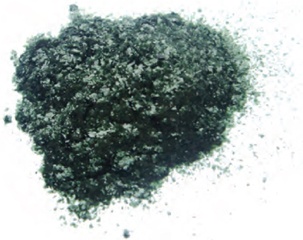
Latin Names:
Aphanizomenon flos-aquae
Common Names:
Klamath Lake Blue-Green Algae, AFA Blue-Green Algae, Algae, Blue-Green Algae, AFA
Superfood Type:
Algae

Klamath Lake blue-green algae is a form of microalgae phytoplankton that differs from spirulina in that it prefers fresh water as opposed to brackish, salty water. At least forty thousand species of microalgae phytoplankton have been identified, not only including blue-green algae, but also ocean-dwelling marine phytoplankton species, seaweeds, fresh water pond algae, and mosses of many colors.
Microalgae phytoplankton form the basis of the food chain. Fossil evidence indicates they were very likely the first organisms to populate the Earth and are still here eons later. Some scientists believe microalgae have been on Earth for approximately 2.8 billion years.
Microalgae are responsible for an estimated 80 to 90 percent of the planet’s overall food supply and oxygen supply. Microalgae obtain their energy through the process of photosynthesis. It is through algal photosynthesis that the Earth’s early atmosphere was converted into its present oxygen-rich state. It seems clear that algae have been the primary developers of the Earth’s atmosphere since life appeared on Earth.
Blue-green algae (of the Cyanophyta family) are extremely hardy survivors and can adapt to a wide range of light, heat, carbon dioxide levels, oxygen levels, and unique aqueous physical environments. Blue-green algae are the richest sources of chlorophyll found in nature. They photo-synthesize better than any plant on Earth.
Blue-green algae are similar in structure to a soft bacteria with chlorophyll, phycocyanin, and other pigments. Like bacteria, blue-green algae are prokaryotes because they lack a membrane-bound nucleus. The genetic information in blue-green algae (DNA and RNA) is easily absorbed by our intestinal flora (friendly bacteria that live in our digestive system). This helps our intestinal bacteria and consequently our bodies digest and connect with the eons-old information contained within blue-green algae, allowing us to improve our immune system and to better adapt to changing conditions in our environment.

Aphanizomenon flos-aquae (AFA) blue-green algae is a particular type of wild blue-green algae that populates its natural habitat—a giant shallow body of water known as Klamath Lake in Oregon. At 125 square miles, Klamath Lake is the largest lake in Oregon. It is also at a relatively high altitude, 4,139 feet above sea level.
In his booklet Primordial Food, Christian Drapeau writes:
Klamath Lake is located in a relatively undeveloped area, surrounded by publicly owned land such as the Crater Lake National Park, the Winema National Forest, the Lower Klamath National Wildlife Refuge, and the Tule Lake National Wildlife Bird Refuge. With the Cascade Mountains to the west, thousands of square miles of National Park to the north and east, and the city of Klamath Falls located downstream at the southern end of the lake, Klamath Lake is virtually untouched by industrial activity and pollution.
AFA is a nitrogen-fixing algae that draws nitrogen from the atmosphere to build world-class protein. AFA has been harvested, filtered, cleaned, and dried from Klamath Lake for worldwide consumption since the 1970s.
AFA blue-green algae from Klamath Lake has become a popular superfood among health enthusiasts all over the world. Blue-green algae is a wild food with a fantastic array of brain-specific phytochemicals, a huge selection of antioxidants, minerals (especially iron, zinc, selenium, and magnesium), amino acids (it is a complete protein), vitamins, enzymes, and many unique nutrients. Blue-green algae is one of the richest food sources of antioxidant compounds, including carotenoids (beta-carotene, lycopene, and lutein), chlorophyll, and phycocyanin.
AFA contains more chlorophyll. Ten grams of AFA algae contains approximately 300 mg of chlorophyll. A10-gram portion of spirulina contains approximately 120 mg.
AFA contains more phycocyanin. AFA blue-green algae has more than twice the phycocyanin (blue pigments) of spirulina: 15 percent versus 7 percent.
AFA contains more vitamin C. AFA blue-green algae contains more than five times the vitamin C content of spirulina.
AFA contains more essential fatty acids. AFA blue-green algae is a cold-water algae that insulates itself with essential fatty acids. In warmer, tropical, saltwater pools (where spirulina grows) less of the insulating, essential fatty acids are required.
An initial review of this comparison indicates that AFA blue-green algae is superior to spirulina. However, years of experience have demonstrated to me that spirulina is more friendly to human metabolism and digestion than AFA blue-green algae. Try them both and see what works for you!
Aphanizomenon flos-aquae (AFA) blue-green algae are made primarily of soft proteins and polysaccharides that are easily digested by our intestinal bacteria that in turn then feed our blood and cells. This “softness” makes AFA one of the most digestible and utilizable protein foods in all of nature. This “soft” characteristic is unusual for plant cells, but is common for animal cells; this is a reason why blue-green algae are often considered 25 percent animal.
AFA is loaded with chlorophyll (1–2 percent of its dry weight). Chlorophyll helps build our blood due to the presence of the pyrol ring in chlorophyll, which is identical to the pyrol ring found in hemoglobin. Chlorophyll helps fight leukemia as well as certain forms of skin and liver cancer. Additionally, chlorophyll helps to deodorize the bowels.
AFA contains an extraordinarily high concentration of the blue-pigment phycocyanin (15 percent) which helps preload the immune system by stimulating the production of more stem cells from the bone marrow. Stem cells are the basic form of all cells and can be transformed into any cell (including T-cells, NK cells, macrophages, and other immune system cell artillery).
AFA is known to contain an exceptional forty major and trace minerals, picked up from the constant stirring of nearly thirty feet of mineral sediment at the bottom of Klamath Lake. Minerals are the atomic matrix of our bodies and are necessary to build every tissue including our bones, teeth, skin, hair, nails, internal organs, muscular system, immune system, and nervous system.
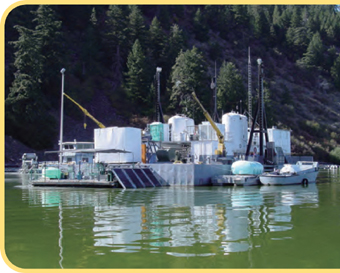
Generally, the more domesticated our food is, the more mineral deficient it becomes. Weston Price’s work in Nutrition and Physical Degeneration demonstrated that the more one adopts a “civilized” diet, the more quickly mineral deficiency symptoms appear. Mineral deficiencies have been associated with every degenerative and chronic condition known to humankind. The key solution to mineral deficiencies appears to be including wild foods in our diet. AFA is a wild food.
AFA is an excellent source of B vitamins including appreciable amounts of vitamins B1, B2, B3, B5, B6, B9, and B12. In general, B vitamins fight stress by helping to more efficiently convert polysaccharides and other carbohydrates into glucose for immediately available energy, endurance, and stamina.
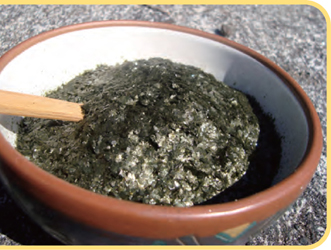
The vitamin B12 found in AFA may or may not be usable by the human body. Dr. Gabriel Cousens’s clinical research indicates that the vitamin B12 in AFA does not increase serum B12 levels in human blood, indicating that the B12 in AFA is unavailable. AFA is also an important source of vitamin C. AFA contains omega-3 fatty acids, including the long-chain omega-3 fatty acid known as docosahexanoic acid (DHA). AFA also contains the phospholipid choline. This makes AFA a brain and nervous system supporting food.
AFA algae is a complete protein source containing approximately 60 percent protein. Eighteen amino acids (protein building blocks) are present in AFA algae. The protein and amino acids in AFA is in highly assimilable glycoprotein and amino acid peptide forms instead of the lipoprotein form found in animal products such as beef and chicken (which are usually cooked into even more difficult-to-digest forms of protein). Therefore, it takes less energy to digest and utilize algae protein. Additionally, neurotransmitters for brain health can be produced from AFA protein more easily and swiftly due to its ease of digestibility.
Protein is used to construct, maintain, and repair every tissue in our bodies from our bones, teeth, muscles, nerves, glands, heart, blood, liver, skin, hair, and everything in between. A lack of protein is mostly associated with muscular weakness, slow healing, and brain chemistry imbalances. An excess of animal protein is associated with heart disease, kidney disease, cancer, and colon cancer. It is becoming more and more clear that plant-based, complete protein sources are of critical importance for the future—this is exactly what superfoods provide and this is exactly what AFA algae provides.
Some of the free amino acid peptides found in AFA may be responsible for helping to detoxify our bodies of heavy metals. Dr. Gillian McKeith reports in her booklet Miracle Superfood: Wild Blue-Green Algae that in her clinical experience AFA algae has been effective in chelating (removing) dangerous, toxic heavy metals such as cadmium, lead, and mercury. She recommends consuming 0.21 to 0.35 ounces (6 to 10 grams) of AFA blue-green algae daily for severe cases of heavy-metal toxicity.
The antioxidant phycocyanin is a pigment that provides the intense blue color in blue-green algae. Phycocyanin can constitute up to 15 percent of the dry weight of a blue-green algae harvest; this is approximately twice the concentration of the phycocyanin found in spirulina. The rare, blue-colored phycocyanin helps inhibit the growth of certain cancer colonies, reduces inflammation of the colitis, fights chronic inflammation, supports the liver, protects against free-radical damage, improves the production of neurotransmitters, and aids production of rejuvenating stem cells.
Phycocyanin helps with the formation of neurotransmitters by acting to assist in the attachment of one amino acid to another.
Phycocyanin has been shown to inhibit the enzymes cyclooxygenase (COX-2) and lipoxygenase. COX-2 and lipoxygenase are enzymes associated with the production of inflammatory compounds. When COX-2 and lipoxygenase are inhibited naturally with phycocyanin, the inflammatory and pain-forming reactions in the body are slowed and/or stopped.
Also found within AFA algae is a concentrated level of phenylethylamine (PEA), an adrenal and brain chemical naturally synthesized in our bodies from two amino acids: phenylalanine and tyrosine. PEA increases the activity of neurotransmitters (brain chemicals) in parts of the brain that control our ability to pay attention and stay alert. Elevated PEA levels occur when we are captivated by a good book, movie, or project; this happens specifically during those moments when we are so focused that we lose all track of time, food, and the outside world. PEA is noticeably abundant in the brains of happy people.
PEA has also been dubbed the “love chemical.” It helps to create feelings of attraction, excitement, and euphoria. When we fall in love our PEA levels increase; we become peppy and full of optimism. The brain releases PEA when we are sexually aroused. PEA levels can peak during orgasm.
When the brain is flooded with PEA, the neurotransmitter dopamine is then blocked from being deactivated and dopamine levels rise. Elevated dopamine levels are associated with increasing mental concentration and a positive attitude.
PEA also increases the effectiveness of another neurotransmitter, nor-epinephrine, which increases feelings of joy.
In one experiment, investigators found that aerobic exercise can elevate the body’s levels of (PEA). PEA is part of the endorphin-induced “runner’s high” that enhances energy, mood, and attention. When researchers had twenty healthy young men run on a treadmill for 30 minutes, they found that the average concentration of PEA in the participants’ urine increased by 77 percent. In addition, the research indicated that patients suffering from depression and bipolar disorder had lower-than-normal levels of PEA in their urine.
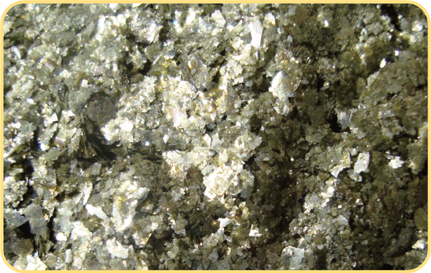
PEA is found premade and in great natural abundance in two foods that we know: cacao and blue-green algae (especially in blue phycocyanin). These two foods can significantly elevate the presence of PEA in our brain.
AFA and cacao keep our PEA levels high, no matter what is happening in our life. Blue-green algae works synergistically with cacao in creating a strong ability to focus and pay attention even if we suffer from Attention Deficit Disorder (ADD). One study looking at blue-green algae as a brain food followed 109 students who were fed blue-green algae. The study concluded that the children had a significant improvement in the ability to focus, follow directions, and concentrate. In addition the children experienced a reduction in argumentative, demanding, and combative behavior, fewer symptoms of anxiety and depression, an improvement in social skills, and fewer signs of emotional and behavioral withdrawal.
Drapeau references a study in Primordial Food that indicates oral doses of PEA at the rate of 10 mg per day decreased symptoms of depression in 60 percent of the patients tested. In addition, PEA did not cause the patients to gain weight, as most people do with antidepressants; instead, they actually lost weight. AFA contains approximately 2 mg per gram of PEA. AFA concentrates are now available that contain 10 mg of PEA per gram. PEA has no side effects; chemical dependency issues and tolerance limits over time (i.e., doses may stay the same over long periods) are not a concern.
PEA appears to be the primary active ingredient that inhibits appetite and helps people to lose weight when they consume AFA blue-green algae. In a double-blind crossover study involving human patients, supplementing the diets of obese outpatients with 2.8 grams of blue-green algae three times daily over a four-week period resulted in a statistically significant reduction of body weight.
AFA algae is exceptionally rich in bioavailable iron. When one switches to a vegetarian diet, the iron normally acquired from blood sources (meat) must be drawn from plants, which may be challenging to some individuals. This is where AFA algae can help. AFA is an exceptional source of iron, which works with AFA’s manganese, copper, B vitamins, and vitamin C to fight anemia especially in vegetarians who are adapting to non-blood (nonheme) iron sources in plants.
DNA and RNA are raw genetic material we call nucleic acids. AFA algae contains approximately 4 percent DNA and RNA. These nucleotides have antimicrobial, antiviral, and antifungal properties. Raw DNA and RNA from AFA algae can be stripped out of the algae by our digestive system and used to assemble new, genetically healthy cells as well as to rejuvenate damaged cells and tissues.
There are thousands of enzymes present in living and/or low-temperature dried AFA algae. These enzymes help to assist our “enzyme cascade,” which begins in digestion, continues through the assimilation of nutrients, and ends in metabolism. The more enzymes we have in our diet, the easier time the body has with digestion and metabolism. Raw algae, honey, and grasses (e.g., wheatgrass juice) are some of the richest sources of enzymes.
We have included a graph comparing the ORAC values of fruits and vegetables with whole AFA super blue-green algae. AFA contains 128 ORAC units per gram.
AFA algae is extraordinarily rich in carotenoids such as beta-carotene. Research continues to demonstrate that the greater the beta-carotene content of one’s diet, the longer one lives (as referenced in the spirulina chapter). Research science has shown that beta-carotene activates the thymus gland and the immune system. Dr. Charles Simone, author of Cancer and Nutrition, describes that beta-carotene blocks the process whereby healthy cells turn into cancerous cells.
Beta-carotene is one of the safest food nutrients and is nontoxic, even in megadoses. If one’s skin begins to turn orange from an extremely high intake of beta-carotene, this is still safe and is not a cause for alarm. It simply indicates that one lacks a liver enzyme that breaks down certain carotene pigments. Some people have this liver enzyme and some people do not have it. If one slows or stops a high intake of carotene, the orange skin color will eventually return to normal.
In Primordial Food, Drapeau cites research performed by a team of scientists affiliated with the University of Illinois. The team was composed of one board-certified forensic examiner and microbiologist, one surgeon, and three physicians. More than two hundred cases were reviewed in this study. The study concluded that AFA appears to be effective in treating various viral conditions, chronic fatigue, Attention Deficit Disorder (ADD), depression, inflammatory diseases, and fibromyalgia. The study suggests that AFA acts on the immune and nervous systems and prevents inflammation.
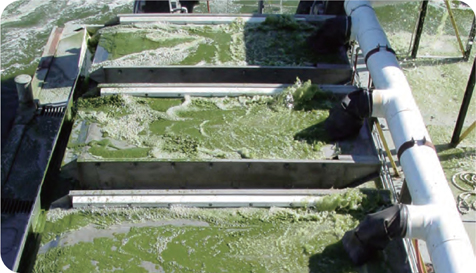
Studies done on AFA have demonstrated that it stimulates the migration of stem cells from the bone marrow into the blood and brain (mostly due to the actions of the blue pigment phycocyanin), stimulates white blood cells, and inhibits COX-2 activity, preventing inflammation and improving nervous-system health, as well as one’s overall mood.
Drapeau also cites research indicating that AFA, when consumed daily for several weeks, helps move natural killer (NK) cells out of the blood and into the tissues to patrol for and destroy damaged and diseased cells. Although green tea and ginkgo biloba leaf improve the activity of NK cells, no other substance has been found that stimulates this patrolling work.
Researchers have discovered that a blue-green algae protein reduces the ability of the human immunodeficiency virus (HIV) and Ebola virus. The antiviral protein, known as cyanovirin-N (CV-N), can extend the survival time of Ebola-infected mice. There is currently no treatment for Ebola infection, which causes severe and often fatal hemorrhagic fever. “CV-N is extremely effective against a broad range of HIV strains,” said Barry O’Keefe, PhD, of NCI’s Center for Cancer Research, one of the authors of the study. “CV-N is the first molecule known to inhibit Ebola infection by interfering with the virus’s ability to enter cells.”
CV-N inhibits HIV and Ebola infection by binding to the outside of the virus and physically blocking it from entering healthy cells. The protein attaches to a particular sugar molecule on the virus surface.
AFA contains alpha-linolenic acid (ALA) and the long-chain omega-3 fatty acid known as docosahexanoic acid (DHA). Nearly 50 percent of the fat (oil) content of AFA is composed of these omega-3 essential fatty acids.
In general, most diets worldwide are deficient in omega-3 fatty acids and excessive in omega-6 fatty acids and rancid trans-fatty acids. An excess of omega-6 fatty acids and trans-fats leads to an inflammatory response in the body, which eventually develops into a contributing factor in cardiovascular disease, immunity challenges, neurological problems, and skin disorders.
Omega-3 fatty acids such as ALA and DHA support immunity by helping to attract immune cells to the sites of injury, chronic pain, and cellular damage while calming the inflammatory response.
Humans manufacture only small amounts of DHA internally through the consumption of alpha-linolenic acid (ALA), an omega-3 fatty acid commonly found in hempseed, chia, flax, as well as other seeds. This amount of DHA is usually not enough to meet the demands of our nervous system, especially in a high-stress environment.
Traditionally, DHA was acquired directly from eating seafood and fish. With the onset of more seafood allergies and the problems of mercury and PCBs polluting fish, safer forms of DHA have been discovered in other foods. AFA is one of those foods.
DHA is a critical essential fatty acid used in the production and maintenance of healthy eyesight (retina), brain and nervous system tissue, cardiovascular “slipperiness,” and sperm. Long-chain omega-3 fatty acids such as DHA make our cardiovascular system too slippery for calcium-forming nanobacteria (microscopic barnacles) to attach and begin to calcify the arteries causing arteriosclerosis.
A deficiency of DHA has been correlated to ADD symptoms, Alzheimer’s, arthritis, autoimmune conditions, cardiovascular disease, depression, low brain serotonin levels, neuroses, postpartum depression, and skin disorders.
The therapeutic consumption of omega-3 fatty acids has been shown to improve one’s mood and cardiovascular conditions. The consumption of omega-3 also inhibits the formation of breast, colon, pancreatic, and prostate cancer.
During seasonal algal blooms in Klamath Lake, the pH of the water can reach eleven and the oxygen can drop below three parts per million, which can be deadly to fish in the immediate vicinity of the bloom. The death of the fish is not due to any toxins.
Reports that AFA contains toxic proteins have proven to be incorrect. Not only have hundreds of thousands, if not millions, of individuals consumed AFA with relatively few cases of side effects, scientific research has indicated that AFA is clear of toxins and that the toxicity of other algae forms may be the source of the confusion.
Some scientists have suggested that AFA blue-green algae contains the amino-acid compound known as ß-methylamino alanine (BMAA), and that this amino-acid compound could be linked to neurological problems. Subsequent test results indicated that AFA is devoid of the controversial amino-acid compound known as BMAA.
In Primordial Food, Drapeau reports, “In Klamath Lake, nearly ten years of intense testing has failed to reveal the presence of any neurotoxins in its AFA. In 1998, the opinion among scientists was that AFA did not contain neurotoxins and that the original samples that had been identified as AFA were likely another species.” He goes on to cite a Wright State University study examining algae genetics that indicated the samples of algae believed to be toxic were not AFA but in fact belonged to the Anabaena genera.
As with any superfood or food, people’s metabolisms and body chemistry respond to some better than others. I’ve presented many superfoods in this book so that you can find those that you enjoy the most and that best resonate with your digestion and metabolism.
Below is a list of AFA algae products to look for on the Internet or in your health food store or supplement shop. For years, dried AFA algae products dominated the market. Of the dried AFA algae products, the Refractance Window drying technology methods are considered the best; look for this designation on product labels. In recent years, the company E3Live has made fresh-living liquid AFA algae available as well as other unique AFA formulas and products.
Dried, powdered AFA blue-green algae
E3Live™ Fresh Liquid Algae
AFA blue-green algae chocolate bars and energy bars
Phycocyanin concentrates (blue pigments of AFA)
PEA concentrates (made from AFA)
AFA blue-green algae probiotics (AFA with friendly digestive bacteria)
AFA blue-green algae can cause a detoxification reaction if consumed in too large a quantity initially. Please start yourself and your family on small doses and gradually build up to larger doses over a period of several months.
Normal or Child (ages 10–18): 2–4 grams a day (2–4 tsp.)
Therapeutic dose: 8–10 grams a day (8–10 tsp.)
Super-Athlete dose: as much as 8–12 grams a day (8–12 tsp.)
Simply add the AFA algae to your water, smoothie, shake, or favorite beverage, stir, and drink!
Note on all recipes: Three tablespoons of fresh E3Live™ AFA blue-green algae is equivalent to one tablespoon of dried AFA blue-green algae. Special thanks to the SacredChocolate.com staff and the E3Live™ staff for many of the recipe ideas.
1 tbsp. dried AFA
⅓ tbsp. dried marine phytoplankton
4 tbsp. virgin, stone-crushed, organic, olive oil, hempseed oil, or any good quality oil
½ tbsp. maca root
1 tsp. organic coconut vinegar or raw apple cider vinegar
2 inches burdock root, chopped and diced
1 small handful of fresh nettles or 2 tbsp. dried nettles
1 pinch of cayenne
1 pinch of turmeric (optional)
Blend all in a blender. Add water to thin the consistency, depending on how thick you want the final dressing. This salad dressing can super-charge your salad. This is a great dressing for athletes interested in building muscle as well as strengthening bones and tendons. It is also great for creating beautiful skin. Tastes great! Enjoy!
5 large ripe, red tomatoes, chopped coarse or fine
3 tbsp. finely chopped cilantro
1–2 jalapeno chilies, deseeded and minced
2 cloves finely minced garlic
1 small purple or white onion, finely chopped
2 tsp. lime juice
1–2 pinches Himalayan sea salt or Celtic sea salt (optional)
1 avocado, finely diced (optional)
1 tbsp. E3Live™ fresh liquid, or 2–4 capsules of E3AFA™, or 1–2 tsp. of E3AFA™ Crystal Flakes
Combine all ingredients in a bowl and mix well. Makes about 4 ½ cups. Serves approximately 8.
3 cups of shredded dry coconut
1 cup raw macadamia nuts or raw cashews
1 lemon
1 vanilla bean (just the scraped interior of the bean)
½ cup cacao nibs (optional)
E3AFA™ dried algae flakes
Place the soaked nuts in the blender and cover with water for one hour. Do not remove water. After one hour, add the peeled lemon (seeds removed) and blend together with water and vanilla on high speed until it’s a thick creamy consistency. Add more water if necessary.
Pour nut-and-lemon mixture over shredded dry coconut (and cacao nibs to add a little crunch, if you like) and mix well. Drop by spoonfuls onto the dehydrator sheet and place a generous amount of E3AFA™ dried flakes on top of each cookie. Dehydrate cookies at 105 degrees until thoroughly dried.
1–3 tbsp. E3Live™ fresh liquid or 2–4 tsp. of E3AFA™ Crystal Flakes
¼ cup strawberries
¼ cup blueberries
1–2 tbsp. spirulina
1 tsp. chlorella powder
1 dropperful of Ocean’s Alive Marine Phytoplankton
2 tbsp. raw cacao powder
2 tbsp. of honey
¼ cup of pure spring water
Add all ingredients to blender and process until smooth. Excellent when chilled.
2 cups fresh or frozen berries
¼ cup cashew nuts
½ avocado
1 tbsp. hempseed oil
½ gallon (2 liters) of spring water
3 tbsp. E3Live™ fresh liquid algae
1 tbsp. dried AFA algae
1–2 tsp. of E3AFA™ Crystal Flakes
1 tsp. phycocyanin (blue pigment of AFA algae)
1 tbsp. fresh bee pollen
Place all ingredients in blender and mix thoroughly until the cashews are completely blended. This powerful smoothie is a dynamic meal replacement. Excellent when chilled.
½ cup tomatoes
¼ cup chopped red bell pepper
¼ cup peeled and chopped cucumber
1½ tbsp. lemon juice
½ tbsp. chopped scallions
⅛ tbsp. Celtic sea salt
⅛ tbsp. fresh-ground pepper
1–3 tbsp. fresh E3Live™ fresh liquid AFA algae
OPTIONAL:
1 small slice of fresh habanero or jalapeño pepper
Add all ingredients to a blender and process until smooth.
½ cup tomatoes
¼ cup chopped red bell pepper
¼ cup peeled and chopped cucumber
⅓ cup pumpkin seeds
3–5 strips of dulse seaweed
3 stalks dinosaur kale
2 sprigs parsley
1 tbsp. peeled lemon
¼ onion
⅛ tbsp. Celtic sea salt or Himalayan salt
⅛ tbsp. fresh ground pepper (optional)
⅛ tbsp. hot peppers of any kind
1–3 tbsp. AFA blue-green algae (dried)
1–3 tbsp. Sun Is Shining™ superfood green powder
Dice and chop the tomatoes, peppers, cucumber, onion, kale, parsley, and lemon into small enough pieces so that all the ingredients will blend smoothly. Add all ingredients to blender and process until smooth.
Make an herbal superherb tea containing:
10 grams pau d’arco
3.5 grams cat’s claw
2 grams chuchuhuasi
2 grams chancapiedra
5 grams goji berries
1 diced vanilla bean
This will make a half-gallon (2 liters) of tea. Use spring water to make your tea. Bring the superherbs to a scalding temperature, but do not boil. Let steep for an hour, and pour 4 cups of the tea into a blender with the other ingredients:
1 tbsp. coconut oil
1 tbsp. raw honey
1 handful of cacao nibs
1–3 tbsp. AFA blue-green algae
1 pinch of Celtic sea salt or Himalayan salt
Blend well. If desired, add your favorite fruits (preferably berries like goji), green superfoods, and supplements. Such optional ingredients may include mesquite powder, soaked Irish moss, ho shou wu (fo-ti), Sun Is Shining™ superfood, cacao powder, SunWarrior rice protein powder, or tocotrienols.
½ liter spring water
¼ cup lemon juice
¼ cup blueberries (preferably wild)
1–2 tsp. camu camu berry powder
1–2 tbsp. noni powder
1–3 tbsp. E3Live™ fresh liquid algae
1–2 tsp. of E3AFA™ crystal flakes
2 tbsp. phycocyanin (blue pigments of AFA algae)
500–1000 mg reishi mushroom mycelium powder
500–1000 mg maitake mushroom mycelium powder
2–4 grams sacha jergon superherb powder
2–4 capsules of MegaHydrate™
¼ cup goji berries (optional)
2 tbsp. of honey (optional)
Add all the ingredients to the blender and blend into a tonic elixir. Add more spring water if necessary. This elixir taken daily will seriously ramp up one’s immune system. Do not add honey or goji berries if you are fighting candida or cancer. Sweet foods of all kinds should be avoided as much as possible when dealing with candida or cancer.